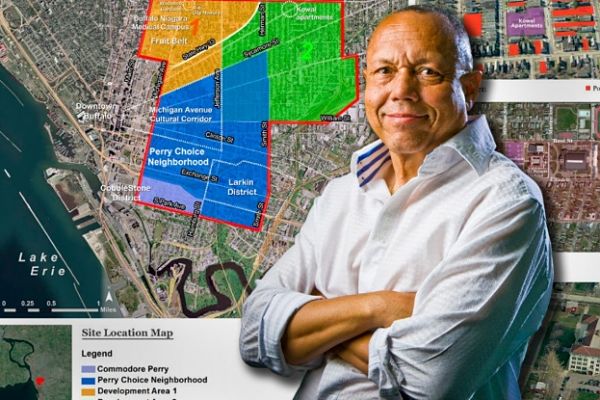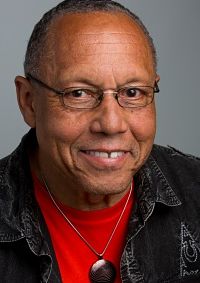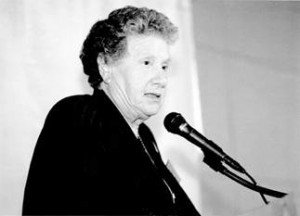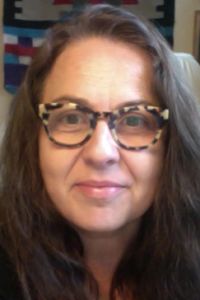Reflections of an Activist Scholar: Henry Louis Taylor, Jr.

Re-Post From Social Science Space
There is a term, structural racism, which centers on the idea that discrimination is built into institutions and culture. Henry Louis Taylor, Jr., a professor of urban and regional planning at the University at Buffalo and the founding director of the Center for Urban Studies there, has taken that idea of built-in racism a step farther. He argues that racism in the metropolitan U.S. is physically part of the landscape, both in the built environment and the market-centric economic network.
Such insights, and his work to redress and reverse them, saw the Urban Affairs Association present Taylor with the UAA-SAGE Marilyn J. Gittell Activist Scholar Award for 2018. The award highlights field-based urban scholarship and promotes the dissemination of work by activist urban scholars. “Taylor’s research explores the nexus between city building and racial and social class injustice,” the UAA explained in a release. “ … His contributions to scholar-activism have been long-standing and deep, delving into both international and local urban issues with a mastery of critical scholarship and a love of community.” This is actually Taylor’s second activist scholar award: in 2012 he received the Lee Benson Activist Scholar Award from the University of Pennsylvania.
Social Science Space took the opportunity of this latest award to discuss Taylor’s role as an activist, as a scholar (“I am an activist turned scholar, not a scholar turned activist”), an urban planner and an historian. We’ve split the interview into two parts, and the second installment, focused on Taylor’s almost two decades of work in Cuba, will appear here next week.
Taylor’s earliest academic work, as an undergrad, was in speech pathology and audiology before he took a second master’s and later a doctorate in urban history at the University at Buffalo. Since then he’s worked diligently on issues of racial justice, especially through the prism of urban planning and the historical experience of African Americans in U.S. cities. This includes academic work, as a professor at Buffalo, sitting on the editorial board of the Journal of Urban Affairs, and writing or co-authoring six books, including the Historical Roots of the Urban Crisis: African Americans in the Industrial City, 1900-1950. Taylor writes and appears often on urban issues for the mainstream press and online media.
Between academia and activism, he’s served on a number of practical projects, writing technical reports for redevelopment projects in his hometown and is currently, alongside Robert M. Silverman and Li Yin, studying gentrification and its impacts in Buffalo through the Urban Institute’s National Neighborhood Indicator Partnership.
As the UAA said in its citation, “Dr. Taylor fully embodies the connection between good scholarship and good activism and stands as a model for young academics.”
What excites you about my work on and off-campus? Do you feel that you are making a difference? Are you pessimistic or optimistic?
I am driven by the quest to end black oppression and build a world based on racial, economic, political, social and cultural justice. This is my life’s mission, and it is what excites me about my work at the university. Of course, the complicated issues facing blacks and other oppressed nationalities will not be solved in my lifetime; so my intent is to develop knowledge, insights and lessons that the next generation can build on. I am energized by a belief that the struggle of blacks and other oppressed groups will ultimately triumph; and that they will succeed in their quest to build a better, more racially and socioeconomically just and humane world.
I came to the University at Buffalo in 1987 with two interactive goals. The first was to build a research center that aligned knowledge production and implementation with the down-on-the-ground struggles of blacks, Latinx and the low-wage white precariat. The second goal was to popularize civic engagement on U.B.’s campus and to build community-university partnerships. This undertaking made it possible for me to connect easily my activism to scholarship.

Henry Louis Taylor, Jr.
The intent of the activist-scholar is to produce and implement knowledge for social change, so that we can understand the world in order to change it. Blacks, Latinx and other oppressed people are beset with oppressive core problems that (1) circumscribe their life chances; (2) produce undesirable economic, social, political and cultural outcomes; and (3) reproduce their positionality at the bottom of the economic order. These oppressive core problems consist of inferior education; inadequate housing; poor health care services; food insecurity, joblessness, low-wages, underdeveloped neighborhoods and powerlessness.
These issues are entangled with systemic structural racism, the market-centric approach to city-building, and the functioning of knowledge capitalism and operation of the neoliberal state. Such complicated issues cannot be resolved without the production and implementation of a knowledge base with the capacity to understand wicked problems and to construct a framework to guide the struggle to eliminate them. The intent of the UB Center for Urban Studies, which I founded, was to engage in the production and implementation of a social change knowledge base. The aim was to conduct studies ranging from historical analysis to theoretical studies to community-based participatory research, as well as neighborhood planning and community development. The intent was to understand core problems and unite with residents in down-on-the-ground struggles to solve them. Problems can never be fully understood and resolved in the absence of struggle. So, the goal was to battle against oppressive neighborhood and workplace conditions, as well as to engage in struggles to transform the entire metropolitan region.
Our work has made a difference. Over the years, we have engaged in many projects. I will highlight one. My first big project was a comprehensive study of the conditions facing Black Buffalo. We put together an interdisciplinary team consisting of 12 junior and senior scholars, along with dozens of graduate students to place Black Buffalo in a historic context and to study challenges facing the black community, including economic issues, inadequate education, work and joblessness, along with crime and victimization. The goal was to understand why neighborhood conditions were worsening and an underclass was growing.
Based on the study’s finding, we constructed a policy framework in partnership with a group of more than 20 practitioners and community residents, and then formed a community economic development organization, the Office of Urban Initiative, Inc., to implement the study’s findings. Over the ensuring years, dozens of organizations and groups used the state of Black Buffalo knowledge base and policy framework to guide their practical work.
The Black Buffalo study became a model of how I carried out my work in the city. Over the years, the UB Center has partnered with dozens of organizations and groups and have produced numerous technical reports and projects, including housing and commercial development initiatives. During this period, I have also learned that power concedes nothing without a demand. Knowledge production must always be connected to struggle.
Our work has made a difference, but we have not changed the trajectory of black neighborhoods, nor have we altered Buffalo’s market-centric approach to city building. Successful projects, including brick and mortar initiatives, and changes a neighborhood’s developmental trajectory are two different things.
Thus, in many respects, while everything has changed in Buffalo, everything has remained the same. Yet, I remain optimistic. The struggle of Black America and oppressed groups is a long movement; it is a protracted movement punctuated with ebbs and flows. My primary task is to produce knowledge, gain insights and learn lessons from participating in struggle, so that I improve the current situation and lay a foundation for future generations to build on. My optimism is fueled by an understanding that blacks and their allies have won many battles over time, and they will keep marching on until victory is won.
What is the state of urban America?
U.S. cities are in trouble. On the surface, many urban centers appear to be thriving; but looks are deceiving. Still, happy talk abounds. Even in my town, the theme song is “Buffalo Rising” as the Buffalo Niagara Medical Campus, downtown investments, and a resurgent housing market fuel hope and optimism. In Cleveland, friends are quick to tell me about the success of “downtown as a neighborhood” and many other exciting things happening there; but looks can be deceiving. Beneath the calm and seemingly flourishing urban skyline, trouble is brewing in superstar cities and peripheral cities alike.
In time, I predict that the urban precariat and the increasingly marginalized and oppressed national minorities, including blacks, Latinx, immigrants, and refugees will be ignited by Henri Lefebvre’s Right to the City manifesto. The right to the city is a clarion call for the production of urban space to be wrested away from neoliberal private and government interests, and restructured in the interest of blacks, Latinx, and the working-class precariat and other groups marginalized by the market-centric creative city building method. We have seen right to the city flashpoints in Ferguson, Baltimore, rise of BlackLivesMatter, and in the growing resistance to police violence in underdevelopment urban communities across the country. These are trailers to a drama that will be increasingly played out on the streets and in the rise of a new political movement sometime in the indeterminant future.
Honoring Another Activist-Scholar
The Urban Affairs Association honored Temple University’s Elizabeth L. Sweet, whose work “focuses on feminist and anti-racist approaches to safe cities and sustainable community development in Latina/o and Latin American communities,” as its 2018 Marilyn J. Gittell Activist Scholar Award-Honorable Mention.
Sweet teaches in the Department of Geography and Urban Studies at Temple, and is an expert in planning theory and qualitative research methodologies (she uses a mixed-methods and place-based approach in her own research). In recent publications she has proposed using body map storytelling and community mapping as innovative ways to co-create data with communities on a wide range of issues and solutions to urban problems.
In its citation, the UAA noted that Sweet “is committed to collaborating with communities in order to influence policy, and she has worked with groups in the U.S., Mexico, and Columbia.. Among her many projects are a chapter on migrant women’s safety and an article on methodologies for making communities safer through reconceptualizing bodies and space.” Off-campus, she works with Women for Economic Justice in Chicago and Coalición Fortaleza Latina in Norristown, Pennsylvania to help create inclusive and equitable cities.
What’s happening? In a recent book, Ricard Florida, the economist and urban studies theorist, argued that U.S. cities were facing a new urban crisis consisting of a failing middle-class, increasing inequality, deepening segregation, and I might add housing affordability, evictions, low-wages, poverty and joblessness, along with the exacerbation of conditions in underdeveloped neighborhoods. According to Florida, superstar cities, such as San Francisco, L.A., Boston, Washington, D.C., and New York City are in crisis, as well as peripheral cities such as Buffalo, Cleveland, and Milwaukee.
The plight of U.S. cities, I argue, is not the result of a crisis situationcaused by some anomaly, or by misguided or insensitive urban policies. No. We are not facing a crisis, but are witnessing the increasingly visible chronic socioeconomic outcomes produced by a neoliberal market-centric approach to building cities and their metropolitan regions. The culprit is this neoliberal market-centricmethod of city-building. Cities are not unplanned and unintentional urban places that grow wild, unbridled and randomly. City-building is intentional, and the resultant economic and spatial inequality is inevitable and deliberate. The new urban crisis conceptual framework, then, hides the structural inequality and racism inherent in the neoliberal market-centric approach to city building.
This unique market-centric approach to building cities deliberately steered city building toward the twin goals of refashioning cities to accommodate emergent knowledge capitalism and to attract the nascent knowledge workers, high-techies and cultural workers, as well as students and others Richard Florida dubbed the creative class. This approach to city building was ignited by the rise of a service, finance, real estate, high-technology and tourism economy, which demanded a new built environment to house it and a new residential environment to house the creative class.
Robert Moses and the Rockefellers forged the creative city building template, although Austrian David Yencken is credited with coining the term in 1988. However, in the 1950s and 1960s, Moses and the Rockefellers intentionally recreated Manhattan as a place that would attract the city’s nascent knowledge workers, high techies, and cultural workers with chic restaurants, coffee houses, elegant co-ops and high culture in a distinctively urban setting where elite and upwardly mobile white residents could live, work, play and shop in cosmopolitan space where they felt safe, secure, comfortable and happy. With impunity, using urban renewal and slum clearance, Moses and the Rockefellers, in their quest to transform the Big Apple into a superstar city, destroyed working class neighborhoods, displaced thousands, gentrified Manhattan and intensified socioeconomic inequality in New York City.
Richard Florida and others embraced and popularized this approach to city-building in the current period. While Florida believed the creative city methodology was most appropriate for big cities with superstar potential, over time, cities regardless of their positionality within the urban hierarchy double-downed on the market-centric creative city approach to city building. Urban leaders everywhere believed the secret to urban prosperity was building a city that attracted and retained the creative class. Such a place would attract knowledge, high-tech and cultural workers and the big companies, investors and prosperity would follow.
This storyline had an ugly side. The creative city strategy combined with the neoliberalization of government to hit with sledgehammer force blacks, Latinx, immigrants and refugees, and the white working class precariat. The creative city approach expropriated urban land with high-value potential and used it for high value creative city commercial and residential development. Gentrification, displacement, relocation to the urban periphery or inner-suburbs and an exacerbation of living standard and quality of the life became the flipside chic creative class neighborhoods.
The Ferguson explosion first revealed the ugly side of the creative city paradigm, especially in limited resource peripheral cities. The big problem is that trickle-down neighborhood development does not work, especially in peripheral cities where government invest most public dollars in vibrant creative class neighborhoods, with the unfounded expectation that concentrated development will spark market-centric activities in areas of concentrated underdevelopment.
The neighborhood-effects literature, and the work of scholars like Robert Sampson in the Great American City and Patrick Sharkey in Stuck in Place indicate the fallacy of such thinking. Sampson and Sharkey argue that neighborhoods are prime determinants of a person’s life chances and socioeconomic outcomes and that underdeveloped neighborhoods are oppressive sites of social reproduction that chronically produce undesirable socioeconomic outcomes among blacks and other people of color. The market-centric neoliberal creative city approach to development will continually produce marginalized underdeveloped neighborhoods, unless there is a radical intervention.
Florida and other urbanist understand the ugly side of creative city development, but think they can solve the problem simply by tinkering with the market. I call this type of thinking urban fantasy theory, where truth and reality is replaced with myths. Michael Oluf Emerson and Kevin T. Smiley makes this point in a brilliant new book, Market Cities, People Cities.They demonstrate that a powerful connection exist between the type of city-building paradigm used and socioeconomic outcomes. They show that market-centric and people-centric approaches to building cities yield fundamentally different outcomes. Thus, socioeconomic and neighborhood outcomes in market-centric places like Houston are fundamentally different from those found in people-centric places like Copenhagen.
The lesson is simple. The city-building paradigm matters. Thus, change the market-centric creative city building paradigm and we bolster the possibility of building a just city based on racial, economic, social, political and cultural justice. Meanwhile, without changing city-building approaches, tensions between concentrated development and concentrated underdevelopment in U.S. will continue to grow until the time comes when the disenfranchised and oppressed raises the Right to the City banner.
How do you overcome injustice fatigue from those who see the same or similar problems echoing throughout the decades?
I am a historian, as well as an urban planner. I understand the connections between the past, present and uncreated future. The black freedom struggle is a long movement—a protracted struggle that extends across time and space. In each epoch, blacks are faced with a challenge they must overcome to move the freedom struggle to the next stage. For example, stage one in the long movement was the battle against slavery. This fight lasted more than 200 years, but in the end blacks and their allies triumphed. Slavery was vanquished. Then it was replaced by an oppressive peonage system that tied blacks to agricultural capitalism as sharecropper, small farmers, and convict laborer. Racial segregation, hostile discrimination, along with legal and extralegal violence reinforced this system and kept blacks fastened to the land, disenfranchised, and powerless.
This was the age of Jim Crow racism. Blacks and their allies fought back. Jim Crow racism was defeated. The struggle took over a hundred years, but in the end the citadel of overt, hostile racism was torn down. During this era, blacks were proletariatinized and became an urban people trapped in underdeveloped urban neighborhoods. In this setting, they entered the third stage in the long freedom movement—the war for power, economic, political, social and cultural freedom. In this period, blacks will join with other oppressed people, including the white precariat, to proclaim their Right to the City and to end the hegemonic domination of market capitalism. This will be their most complex and difficult struggle, but in the end blacks and their allies will win. Justice always triumphs over injustice. Thus, when viewed against the long black freedom movement backdrop, I see blacks confronting challenges, battling against them, ultimately winning, and then moving on to the next challenge. So, I am not fatigued. On the contrary, I am energized, optimistic and excited.
Would you describe the interplay between academia and activism/advocacy in your work? Not every scholar is comfortable bridging the two.
I am an activist turned scholar, not a scholar turned activist. During my tenure in the left movement, I viewed a schism between knowledge production and implementation and the black struggle that frustrated our work down-on-the-ground in neighborhoods, the workplace, and cities. The reason is the socioeconomic, political, and cultural challenges facing blacks are too complex to understand without being unraveled by research and study. To transform freedom dreams into reality, not only do we need to understand the educational, housing, employment, health and underdeveloped neighborhood problem, but also we must know how to solve them in the real world. Moreover, we need to understand the history of the long movement, along with knowledge of its strengths and weakness, as well as successes and failures.
This task of understanding and solving the core problems facing blacks requires both the production and implementation of knowledge. For example, you cannot find a cure to lung cancer by engaging in research without practice. The theories of causality must be tested and verified in practical situations. The same is true in social struggles. Urgent social problems cannot be solved simply by producing knowledge. Knowledge must be tested and verified in the crucible of battle. This interplay between theory and praxis makes it possible to learn from our errors, miscalculations and flaws in thinking, thereby refining and improving knowledge.
I love bridging the space between activism and scholarship, but the production of knowledge for social change does not require that every scholar play this bridging role. What it does require is that the scholar is consciously and intentionally producing knowledge to bring about social change. Within this context, some scholars might produce knowledge, while others take the lead in implementing it, and still others, like myself, will produce and implement it. A scholar, then, can be a very progressive participant in the movement just by producing knowledge. However, to be considered an activist-scholar, one must be involved in connecting their scholarship to struggles down-on-the-ground.
On this point, I think that multiple forms of research can contribute to the production and implementation of knowledge for social change. In some instances, I engage in theoretical studies. Then in other situations, I am involved in action-oriented research to shed light on specific urban or neighborhood problems, while on other occasions, I am working with communities to develop transformative neighborhood plans. The larger point is the production of knowledge for social change must be intention, and the scholar must be deliberately seeking to create a knowledge base that contributes to the building of a better, more just and humane world.
What advice do you have for a young scholar-activist who wants to follow in your steps, or those of Marilyn Gittell or Lee Benson?

Marilyn Gittell
Activism and good scholarship are intertwined. The premise that activism distracts from scholarship is based on myth not truth and reality. The struggle to transform the conditions of life among oppressed people and build a better, more just, equitable and humane world is an extraordinarily complex task, which requires the highest level of scholarship combined with struggles down-on-the-ground. The great scholar-activists, such as W.E.B. Du Bois, Oliver Cox, Cedric Robinson, Cornel West, Mary Berry, Angela Davis, Marilyn Gittell, Ira Harkavy and Lee Benson understood this. They understood that connecting activism to scholarship was out best hope for solving the core problems facing blacks and other oppressed people, as well as transforming the United States into a people-centric society based on racial, social, economic, political, and cultural justice.
These activist-scholars also understood that knowledge, alone, is not enough. As Frederick Douglass said, “Without struggle, there is no progress. There never has and there never will be.” And this is exactly why scholarship must be linked to activism. So, my advice to the young scholar-activist is to become the best scholar you can be and find creative and innovative ways to link that scholarship to the quest to bring about social change. Thus, the young scholar-activist must embrace the Douglass credo, “Without struggle, there is no progress.”

